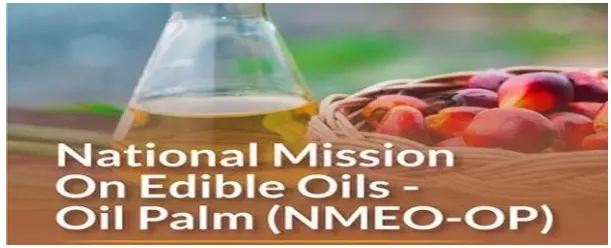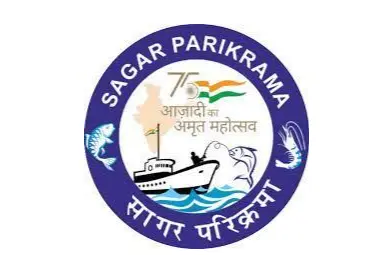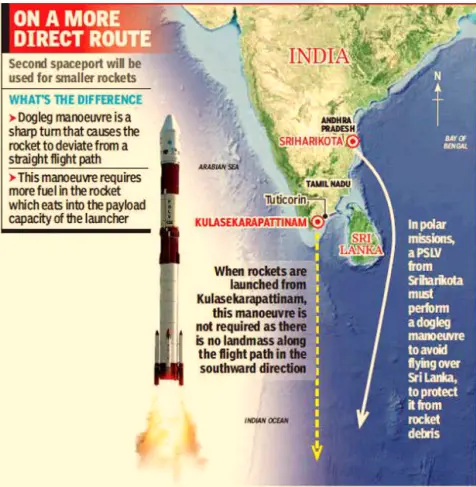Saturday, 16th March 2024
A Comprehensive Framework for a Regulatory Sandbox
In News: The Reserve Bank of India (RBI) has recently extended the timeline for the completion of different stages of a Regulatory Sandbox (RS) to nine months, compared to the previous duration of seven months.
What is the Regulatory Sandbox (RS)?
Background
- The Reserve Bank of India (RBI) established an inter-regulatory Working Group in 2016 to examine FinTech's granular aspects and its regulatory implications.
- The group recommended implementing a Regulatory Sandbox (RS) framework to respond to the evolving FinTech landscape effectively.
About
- A Regulatory Sandbox (RS) facilitates live testing of new products or services in a controlled regulatory environment, allowing regulators to grant certain relaxations for testing purposes.
- It enables the regulator, financial service providers, and customers to assess the benefits and risks of emerging financial innovations.
Objectives
- The RS aims to promote responsible innovation in financial services, enhance efficiency, and benefit consumers. It provides a structured avenue for regulators to engage with the ecosystem and develop innovation-enabling regulations.
Target Applicants
- Fintechs, banks, and companies supporting financial services businesses are potential applicants for entry into the RS.
Associated Benefits and Challenges
Benefits
- Regulatory Insights: Regulators gain empirical evidence on emerging technologies, aiding in informed regulatory decisions.
- Enhanced Understanding: Financial service providers improve their comprehension of new financial technologies, potentially integrating them into their business plans.
- Cost-Effective Testing: Users can assess product viability without costly roll-outs.
- Financial Inclusion: FinTech solutions can enhance financial inclusion.
- Thrust Areas for Innovation: Microfinance, small savings, remittances, mobile banking, and digital payments can benefit from RS experimentation.
Challenges
- Flexibility and Time Constraints: Innovators may face challenges adapting quickly during the sandbox process.
- Case-by-Case Authorizations: Securing customized authorizations can be time-consuming and involve subjective assessments.
- Limitations on Legal Waivers: The RS cannot offer legal exemptions, potentially limiting innovators.
- 4. Post-Sandbox Regulatory Approvals: Regulatory approvals may be necessary even after successful sandbox testing, delaying product launch.
Way Forward
- Streamline Process: Simplify application procedures and provide clearer guidelines for participation.
- Increase Transparency: Provide clear criteria for decision-making in case-by-case authorizations.
- Comprehensive Support: Offer education and support for innovators, including regulatory guidance.
- Collaborate with Legal Experts: Develop frameworks to address legal issues, ensuring consumer protection.
- Streamline Regulatory Approvals: Establish fast-track approval mechanisms for proven innovations.
|
UPSC Previous Year Questions Prelims (2010) Q. With reference to India, consider the following
Which of the above can be considered as steps taken to achieve the “financial inclusion” in India? (a) 1 and 2 only Ans: (d) |
Source: BS
New Satellite-Based Toll Collection System
In News: The Indian Ministry of Road Transport and Highways plans to introduce a new highway toll collection system using GNSS technology before the 2024 election model code of conduct takes effect.

Introduction to the New Proposed Highway Tolling System:**
- Utilizes GNSS technology for accurate location tracking.
- Vehicles fitted with On-Board Units (OBUs) communicate with satellites for location determination.
- Digital image processing used to log coordinates of national highways for toll calculation.
- Toll amounts deducted from a digital wallet linked to the OBU.
- Enforcement measures include gantries equipped with CCTV cameras along highways.
- System to initially coexist with existing FASTag-based toll collection.
- Decision pending on mandating OBUs for all vehicles.
Benefits
- Smoother traffic flow with elimination of toll plazas.
- Faster commutes due to frictionless toll collection.
- Fair billing with tolls based on actual distance traveled.
Challenges
- Difficulty in recovering tolls from users with depleted digital wallets.
- Requirement for extensive infrastructure for enforcement purposes.
- Addressing data security and privacy concerns effectively.
|
UPSC Previous Year Questions Prelims (2023) Q. 1 Which one of the following countries has its own Satellite Navigation System? (a) Australia Ans: d Prelims (2018) Q.2 With reference to the Indian Regional Navigation Satellite System (IRNSS), consider the following statements
Which of the statements given above is/are correct? (a) 1 only Ans: (a) Mains (2018) Q.1 Why is the Indian Regional Navigational Satellite System (IRNSS) needed? How does it help in navigation? |
Source: TH
Challenges Encountered by Gig Workers
In News: A recent study conducted by the People’s Association in Grassroots Action and Movements and the Indian Federation of App-based Transport Workers sheds light on the challenges faced by gig workers, including app-based cab and delivery drivers/persons in India.

Key Highlights of the Study
- Long Working Hours
- About one-third of app-based cab drivers work for over 14 hours daily.
- Over 83% work more than 10 hours, with 60% working over 12 hours.
- Over 60% of drivers from Scheduled Castes (SC) and Scheduled Tribes (ST) work for over 14 hours daily.
- Low Pay
- Over 43% of gig workers earn less than Rs 500 a day or Rs 15,000 a month after deducting costs.
- 34% of app-based delivery persons earn less than Rs 10,000 a month.
- Financial Strain
- 72% of cab drivers and 76% of delivery persons face difficulty managing expenses.
- 68% of cab drivers' expenses exceed their earnings, potentially leading to debt.
- Unsatisfactory Compensation
- Over 80% of app-based cab drivers are unsatisfied with fares.
- Over 73% of app-based delivery persons are dissatisfied with rates.
- Work Conditions
- Physically exhausting work hours increase the risk of accidents.
- Many drivers struggle to take regular days off, with less than 37% belonging to a union.
- Issues with Platforms
- Workers face challenges like ID deactivation and customer misbehavior.
- A significant majority report negative effects from customer behavior.
Recommendations
- Regulations for Fair Payment Structures
- Ensure fair and transparent payment structures to prevent underpayment or exploitation.
- Implement a minimum wage for platform workers.
- Prevent ID Blocking
- Prohibit indefinite blocking of worker IDs.
- Address Rising Voices
- Respond to demands for reduced commission rates and separate payments for fuel bills.
- Enhanced Social Security
- Provide stronger social security measures for gig workers.
- Government oversight on the fairness of algorithms used by platforms.
Understanding Gig Workers
- Definition
- Individuals working temporarily for multiple clients or companies.
- Characteristics
- Independent contractors with control over their work.
Importance of Social Security for Gig Workers
- Economic Security
- Job insecurity demands social security benefits like unemployment insurance and retirement savings.
- Productive Workforce
- Health benefits lead to a healthier, more productive workforce.
- Equity in Opportunities
- Social security benefits level the playing field and reduce disparities.
- Long-term Financial Security
- Enables gig workers to save for retirement and reduce dependence on public assistance.
Challenges in Providing Social Security
- Classification and Flexibility
- Blurred boundaries make it challenging to determine company obligations.
- Flexibility in gig work complicates benefit design.
- Funding and Coordination
- Identifying funding mechanisms is complex.
- Coordinating data among platforms, agencies, and institutions is challenging.
- Education and Awareness
- Gig workers may lack awareness of their rights and entitlements.
Measures for Ensuring Social Security
- Implementation of Code on Social Security
- Rules under the Code need to be framed expeditiously.
- Adopting International Models
- Follow examples from the UK and Indonesia to provide benefits to gig workers.
- Expanding Employer Responsibilities
- Eliminate the practice of classifying gig workers as self-employed.
- Government Support
- Invest in increasing exports in high-skill gig work.
- Collaborate with stakeholders to establish fair mechanisms for providing social security.
Conclusion
Comprehensive measures are needed to improve gig workers' working conditions, financial security, and overall well-being, advocating for their rights and protections in the gig economy.
|
UPSC Previous Year Questions Mains (2021) Q. Examine the role of ‘Gig Economy’ in the process of empowerment of women in India. |
Source: TH
Child Mortality Levels and Trends
In News: The latest report from the United Nations Inter-agency Group for Child Mortality Estimation, titled "Levels and Trends in Child Mortality," reveals a significant drop in the annual global under-five deaths in 2022.
Key Highlights of the Report
- Historic Low in Child Mortality:
- Under-five deaths decreased to 4.9 million in 2022.
- Global under-five mortality rate (U5MR) dropped by more than half since 2000.
- Persistent High Death Toll:
- Despite progress, annual death toll among children, adolescents, and youth remains high.
- In 2022, 2.3 million under-five deaths occurred within the first month of life.
- Magnitude of Lives Lost:
- Between 2000 and 2022, 221 million children, adolescents, and youth died.
- Neonatal deaths accounted for 72 million under-five deaths.
- Inequality in Survival Chances:
- Children face unequal survival chances based on geographical location, socio-economic status, and conflict-affected settings.
- Regional Disparities:
- Sub-Saharan Africa bears the highest child mortality burden.
- Many countries will not meet the UN-mandated Sustainable Development Goal (SDG) targets on time.
Recommendations to Curb Child Mortality
- Increase Access to Family Planning Services:
- Comprehensive family planning services can prevent unintended pregnancies, reducing the risk of preterm births and stillbirths.
- Improve Antepartum Services:
- Enhancing antenatal care, including health and nutrition check-ups, can lead to healthier pregnancies and reduce preterm births.
- Identification and Management of Risk Factors:
- Implement effective screening programs to manage risk factors like hypertension and infections during pregnancy.
- Improve Data Recording and Reporting:
- Enhance data collection systems to accurately record and report preterm births and stillbirths for targeted interventions.
- Implement Surveillance Guidelines:
- Ensure timely reporting and analysis of maternal and perinatal deaths to inform policy and practice for intervention.
|
UPSC Previous Year Questions Prelims (2017) Q. Which of the following are the objectives of ‘National Nutrition Mission’?
Select the correct answer using the code given below: (a) 1 and 2 only Ans: (a) Mains (2021) Q. Can the vicious cycle of gender inequality, poverty and malnutrition be broken through microfinancing of women SHGs? Explain with examples. |
Source: DTE
What is World Gold Council (WGC)?
In News: According to data from the World Gold Council, the Reserve Bank of India (RBI) made its largest gold purchase since July 2022 by acquiring 8.7 tonnes of gold in January.
- Established in 1987, the World Gold Council (WGC) is the market development organization for the gold industry.
- Its members include leading gold mining companies worldwide, operating as a nonprofit association with a focus on promoting gold usage and demand.
- Headquartered in London, the WGC has operations in key markets like India, China, Singapore, and the USA, covering approximately three-quarters of global gold consumption.
- The WGC serves as the global authority on gold, providing comprehensive industry analyses and advocating for gold consumption.
- It works to maximize industry growth by setting standards, proposing policies, and ensuring fairness and sustainability in gold mining practices.
- The WGC promotes gold consumption for individuals, industries, and institutions, while also co-sponsoring research for new uses or products containing gold.
- Notably, the WGC was the creator of the first gold exchange-traded fund.
Source: FT
Private Placement
In News: Recently, SEBI made the decision to revoke specific circulars that granted relaxation in instances related to the allotment of securities via private placement.
Understanding Private Placement
- Private placement involves selling stock shares or bonds to selected investors and institutions instead of on the open market.
- Investors participating in private placement programs include wealthy individuals, financial institutions, mutual funds, insurance companies, and pension funds.
- One advantage of private placement is its relatively fewer regulatory requirements compared to public offerings.
- Companies opting for private placements can maintain closer relations with investors, negotiate flexible terms, and retain greater control over growth strategies.
- There are two types of private placement: preferential allotment and qualified institutional placement (QIP).
Preferential Allotment:
- This method involves issuing new shares to existing shareholders or specific investors at a price often lower than the prevailing market price.
- Purpose: Commonly used to reward or retain existing shareholders, such as promoters, by offering them the opportunity to purchase additional shares.
- Governed by SEBI regulations and the Companies Act in India.
- Companies must seek permission from shareholders for preferential allotment.
Qualified Institutional Placement (QIP):
- QIP is a private placement exclusive to listed companies.
- Listed companies can issue shares or other securities to qualified institutional buyers (QIBs) without making a public offering.
- Purpose: Used by companies to quickly and efficiently raise capital from institutional investors for expansion, debt reduction, or other corporate purposes.
- Governed by SEBI guidelines in India.
Source: IE
National Mission for Edible Oils - Oil Palm (NMEO-OP)
In News: The Prime Minister recently launched the inaugural Oil Palm Processing Mill as part of Mission Palm Oil in Arunachal Pradesh.

Overview of National Mission for Edible Oils - Oil Palm (NMEO-OP)
- Initiated by the Government of India in August 2021, NMEO-OP aims to significantly boost oil palm cultivation and crude palm oil production.
- It is categorized as a Centrally Sponsored Scheme with a particular emphasis on the North East region and the Andaman and Nicobar Islands, aiming to enhance the area and productivity of oilseeds and Oil Palm.
- Scheme Outlay: With a total financial outlay of Rs. 11,040 crores, including Rs. 8,844 crore from the Government of India and Rs. 2,196 crore from the State share, which includes viability gap funding.
Targets of NMEO-OP
- Increase the area of oil palm cultivation to 10 lakh hectares from 3.5 lakh hectares during 2019-20 by 2025-26, indicating an additional 6.50 lakh hectares.
- Raise Crude Palm Oil production from 0.27 lakh tonnes during 2019-20 to 11.20 lakh tonnes by 2025-26.
- Enhance consumer awareness to maintain a consumption level of 19.00 kg/person/annum until 2025-26.
Implementing Stakeholders
- The State Department of Agriculture, State Department of Horticulture, Central University, ICAR-Institutions, CDDs, SAUs, KVKs, Central Agencies/Cooperatives, Oil palm processors/ Associations, DD Kisan, AIR, DD, TV channels are among the implementing stakeholders of the NMEO-Oil palm.
Features of NMEO-OP
- It offers assistance for planting material, inputs for intercropping up to a gestation period of 4 years, maintenance, establishment of seed gardens, nurseries, micro-irrigation, bore well/pumpset/water harvesting structure, vermicompost units, solar pumps, harvesting tools, custom hiring center cum harvester Groups, farmers and officers training, and replanting of old oil palm gardens.
Oil Palm Production in India
- Oil Palm (Elaeis guineensis), originating from West Africa, is a relatively new crop in India with the highest vegetable oil yielding capability per hectare.
- It produces two distinct oils, palm oil, and palm kernel oil, utilized for culinary as well as industrial purposes.
- Major oil palm-growing states include Andhra Pradesh, Telangana, and Kerala, accounting for 98% of total production, while Karnataka, Tamil Nadu, Odisha, Gujarat, and Mizoram also have significant areas under oil palm cultivation.
Source: KJ
Sagar Parikrama
In News: The Minister of Fisheries, Animal Husbandry, and Dairying is set to unveil a book and video detailing the "Sagar Parikrama" initiative.

Overview of Sagar Parikrama
- Sagar Parikrama is an outreach program designed to connect with the fishing community along the entire coastal belt of India via a predetermined sea route.
- Launched to comprehend the challenges, experiences, and aspirations of fishermen and to raise awareness about government schemes available to them.
- Nodal Ministry: Ministry of Fisheries, Animal Husbandry, and Dairying.
- The Sagar Parikrama Yatra consisted of 12 phases completed in just 44 days, covering approximately 7,986 out of 8,118 kilometers of the Indian coastline.
- It traversed 3,071 fishing villages across 80 coastal districts in all Coastal States/Union Territories.
- Certificates and sanctions related to schemes like Pradhan Mantri Matsya Sampada Yojana (PMMSY) and Kisan Credit Card (KCC) were distributed to deserving fishermen, fish farmers, and young fishery entrepreneurs during the events.
- Information about various schemes, including PMMSY and KCC, was disseminated through print and electronic media, videos, and digital campaigns to enhance awareness among fishermen.
Source: PIB
Contract Labour and the Contract Labour (Regulation and Abolition) Act, 1970
In News: Recently, the Supreme Court noted that workers engaged in tasks of a continuous or permanent nature cannot be categorized as contract laborers under the Contract Labour (Regulation & Abolition) Act, 1970, to deprive them of job regularization benefits.
Understanding Contract Labour and the Contract Labour (Regulation and Abolition) Act, 1970
- Contract labour refers to workers hired through a contractor for the work of an establishment.
- They are considered indirect employees and are not directly paid or listed on the establishment's payroll.
- The contractor is responsible for hiring, supervising, and paying the contract workers on behalf of the establishment.
- The Contract Labour (Regulation and Abolition) Act, 1970, aims to regulate the employment of contract labour and improve working conditions.
- The Act applies to establishments with twenty or more contract workers and contractors with twenty or more employees.
- It does not apply to establishments with intermittent work or those located in special economic zones (SEZs).
- Salient features include the requirement for establishments to obtain registration and contractors to obtain licenses.
- Contractors are mandated to pay wages to contract workers within stipulated periods, failing which the principal employer may be liable.
- Wages are determined by the Commissioner of Labour, and non-compliance can lead to fines and imprisonment.
- Central and State Advisory Boards are constituted to advise governments on Act administration.
- Governments have the authority to prohibit contract labour employment in certain processes or operations.
Source: LL
Indo-Pacific Economic Framework for Prosperity
In News: The Minister of Commerce & Industry recently participated in the Virtual Ministerial Meeting of the Indo-Pacific Economic Framework for Prosperity (IPEF).
Indo-Pacific Economic Framework for Prosperity: Advancing Regional Cooperation
- The framework, initiated in May 2022, aims to foster cooperation and economic integration in the Indo-Pacific region.
- Its objectives include promoting resilience, sustainability, inclusiveness, economic growth, fairness, and competitiveness among member economies.
- IPEF seeks to complement existing regional architecture and uphold the global rules-based trading system.
- Member countries include Australia, Brunei, Fiji, India, Indonesia, Japan, the Republic of Korea, Malaysia, New Zealand, the Philippines, Singapore, Thailand, the United States, and Vietnam.
- The framework is built on four main pillars: Trade, Supply chain resilience, Clean Energy, Decarbonization, and Infrastructure Taxes and anti-corruption measures.
- Although not a Free Trade Agreement (FTA), it allows members to negotiate specific areas of interest.
- India actively participates in the IPEF but has opted out of the trade pillar due to misalignment with its trade policies.
Source: PIB
A New Era in Trade Agreements: India-EFTA Deal
In News: A recent article revolves around the importance and hurdles associated with the newly inked Trade and Economic Partnership Agreement (TEPA) between India and the European Free Trade Association (EFTA).
European Free Trade Association (EFTA)
- An intergovernmental organization promoting free trade and economic integration.
- Member States: Iceland, Liechtenstein, Norway, and Switzerland.
History
- Established by a Convention signed in Stockholm on January 4, 1960.
- Aims to serve as an alternative trade bloc for European states not joining the European Economic Community (EEC).
Main Tasks
- Maintaining and developing the EFTA Convention.
- Managing the Agreement on the European Economic Area (EEA Agreement).
- Developing EFTA's worldwide network of free trade agreements.
India and EFTA
- Bilateral trade between India and EFTA countries reached USD 18.65 billion in 2022-23.
- Switzerland is India's largest trading partner in the group, followed by Norway.
- India-EFTA Trade and Economic Partnership Agreement (TEPA) signed in March 2024.
Trade and Economic Partnership Agreement (TEPA)
- Aims to create trade and investment opportunities by eliminating tariffs and non-tariff barriers.
- Covers 14 chapters, including trade in goods, intellectual property rights, and trade facilitation.
Key Highlights
- EFTA commits to investing USD 100 billion in India over 15 years, generating 1 million direct jobs.
- Offers 92.2% of tariff lines covering 99.6% of India's exports.
- India offers 82.7% of tariff lines covering 95.3% of EFTA exports.
- Provisions for Mutual Recognition Agreements in professional services.
Significance of India-EFTA Deal
- Economic growth and job creation.
- Investment boost for infrastructure and technology sectors.
- Expansion of trade in services.
- Access to high-quality Swiss products for Indian customers.
- Strengthening India's economic ties with Europe.
Key Issues
- Exclusion of sensitive sectors like agriculture.
- Concerns over data exclusivity provisions.
- Difference in income levels between India and EFTA countries.
- Non-tariff barriers and domestic resistance.
Way Forward
- Address asymmetries through common ground.
- Streamline regulatory processes and reduce non-tariff barriers.
- Build capacity and infrastructure for growth.
- Foster collaboration through stakeholder dialogues and knowledge sharing.
Conclusion
- The India-EFTA deal offers a promising opportunity for a stronger economic partnership.
- Collaborative efforts and shared vision are essential for its success and for setting a positive precedent for future trade agreements.
|
UPSC Previous Year Questions Prelims (2018) Q. 1. Consider the following countries
Which of the above are among the ‘free-trade partners’ of ASEAN? (a) 1, 2, 4 and 5 Ans: C Prelims (2017) Q2‘Broad-based Trade and Investment Agreement (BTIA)’ is sometimes seen in the news in the context of negotiations held between India and (a) European Union Ans: A Mains (2020) Q1. Quadrilateral Security Dialogue (Quad) is transforming itself into a trade bloc from a military alliance, in present times. Discuss. |
Source: TH
Share the article
Get Latest Updates on Offers, Event dates, and free Mentorship sessions.

Get in touch with our Expert Academic Counsellors 👋
Frequently Asked Questions
UPSC Daily Current Affairs focuses on learning current events on a daily basis. An aspirant needs to study regular and updated information about current events, news, and relevant topics that are important for UPSC aspirants. It covers national and international affairs, government policies, socio-economic issues, science and technology advancements, and more.
UPSC Daily Current Affairs provides aspirants with a concise and comprehensive overview of the latest happenings and developments across various fields. It helps aspirants stay updated with current affairs and provides them with valuable insights and analysis, which are essential for answering questions in the UPSC examinations. It enhances their knowledge, analytical skills, and ability to connect current affairs with the UPSC syllabus.
UPSC Daily Current Affairs covers a wide range of topics, including politics, economics, science and technology, environment, social issues, governance, international relations, and more. It offers news summaries, in-depth analyses, editorials, opinion pieces, and relevant study materials. It also provides practice questions and quizzes to help aspirants test their understanding of current affairs.
Edukemy's UPSC Daily Current Affairs can be accessed through:
- UPSC Daily Current Affairs can be accessed through Current Affairs tab at the top of the Main Page of Edukemy.
- Edukemy Mobile app: The Daily Current Affairs can also be access through Edukemy Mobile App.
- Social media: Follow Edukemy’s official social media accounts or pages that provide UPSC Daily Current Affairs updates, including Facebook, Twitter, or Telegram channels.






